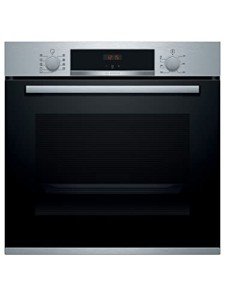The No. 1 Question That Anyone Working In Built-In Range Oven Must Know How To Answer
Understanding Built-in Range Ovens: A Comprehensive Guide
Built-in range ovens have actually ended up being a staple in contemporary cooking areas, offering a seamless blend of performance and style. These appliances not just improve the aesthetic appeal of any kitchen area however also augment cooking effectiveness. This short article will check out the various elements of built-in range ovens, including their functions, types, advantages, installation factors to consider, and maintenance ideas.
What is a Built-in Range Oven?
A built-in range oven is a home appliance that combines a stove and an oven into a single system developed to be integrated into the kitchen cabinets. Unlike standalone ovens, built-in ranges are developed to supply a more customized look and often included a range of functions that cater to both amateur cooks and seasoned chefs. These units can be powered by gas or electrical energy, with each type providing different benefits.
Features of Built-in Range Ovens
Built-in range ovens include a huge selection of features that add to their appeal. A few of these consist of:
- Self-Cleaning Options: Many built-in ovens come equipped with self-cleaning cycles, making upkeep easier.
- Smart Technology: Features like Wi-Fi connection and app-controlled cooking programs enable users to handle their ovens from their smartphones.
- Convection Cooking: Many built-in ovens have convection fans that circulate hot air for consistent and even baking.
- Several Cooking Modes: Options such as steam cooking, broiling, and conventional baking offer adaptability in cooking methods.
Kinds Of Built-in Range Ovens
When it pertains to built-in range ovens, there are two main types: gas and electric. Below is a contrast of their crucial functions:
Feature
Gas Range Oven
Electric Range Oven
Heating Method
Flames produced by burning gas
Electric heating aspects
Temperature Control
Instantaneous heat control
Consistent and steady heat
Setup
Requires gas line
Requires electrical outlet
Maintenance
Can be more challenging to tidy
Normally simpler to clean
Cooktop Performance
High heat for quick searing
Even heating for baking
Advantages of Built-in Range Ovens
Built-in range ovens use several advantages, making them a desired option for numerous property owners. These benefits include:
- Space Efficiency: Built-in designs maximize counter space, making kitchen layouts more effective.
- Visual Appeal: They offer a custom-made, professional want to the kitchen, incorporating flawlessly with cabinets and counter tops.
- Increased Property Value: High-quality built-in appliances can enhance the worth of a home.
- Boosted Cooking Experience: Features such as convection cooking and smart innovation make cooking more enjoyable and efficient.
- Energy Efficiency: Modern built-in ovens often use energy-saving technologies which minimize power usage.
Setup Considerations
Proper setup is crucial for built-in range ovens. Here are some important elements to consider:
- Space Requirements: Measure the offered space in the kitchen to guarantee that the built-in oven fits flawlessly within cabinets.
- Electrical/Gas Connections: Ensure that the appropriate connections are offered. For gas ovens, a gas line should be accessible; for electric ovens, a devoted circuit is needed.
- Ventilation: Adequate ventilation is vital, particularly for gas designs, to prevent the buildup of hazardous gases.
- Professional Installation: It is a good idea to have the oven installed by a professional to comply with safety standards and producer standards.
Maintenance Tips
Keeping a built-in range oven is necessary for its longevity and performance. Here are some ideas to keep your home appliance in top condition:
- Regular Cleaning: Clean spills and discolorations immediately to prevent them from becoming tough-to-remove residues.
- Self-Clean Cycle: Utilize the self-clean feature frequently to preserve the interior.
- Examine Seals: Inspect door seals to ensure they are airtight and change them if needed.
- Expert Servicing: Schedule regular upkeep consult certified service technicians to guarantee optimal performance.
Frequently asked questions
What sizes do built-in range ovens can be found in?
Built-in range ovens normally come in standard widths of 24, 30, and 36 inches. It is essential to measure your kitchen space to choose the appropriate size.
Are built-in range ovens more costly than freestanding models?
Yes, built-in range ovens tend to be more pricey due to their custom style and installation requirements. However, their benefits often validate the investment.
Can I install a built-in range oven myself?
While it is possible for skilled DIY-ers, it is generally advised to employ an expert for appropriate setup and security compliance.
How do I pick between a gas and electric built-in range oven?
Selecting between gas and electric largely depends upon personal cooking choices and the existing facilities of your kitchen. Gas cooktops use instant heat control, while electric cooktops supply even warming.
Are built-in range ovens energy-efficient?
Many modern-day built-in range ovens are created with energy-saving functions, making them efficient options for the ecologically conscious customer.
Built-in range ovens provide a fascinating mix of performance, convenience, and style. Their capability to elegantly incorporate within kitchen style makes them an attractive option for house owners looking to improve their culinary experience. By comprehending their functions, advantages, and upkeep needs, consumers can make informed choices when purchasing this essential kitchen device. Planning for built in gas oven and hob and routine maintenance will ensure that your built-in range oven serves you well for many years to come.
